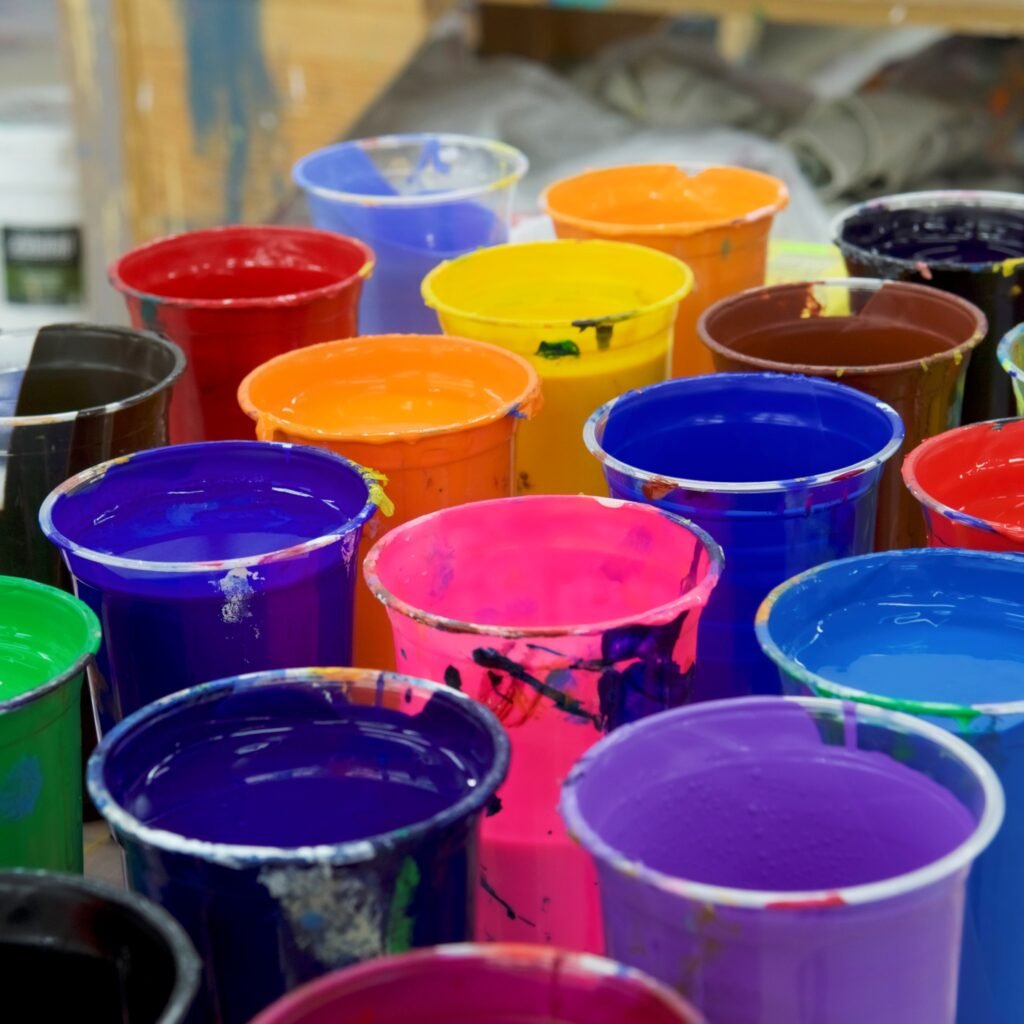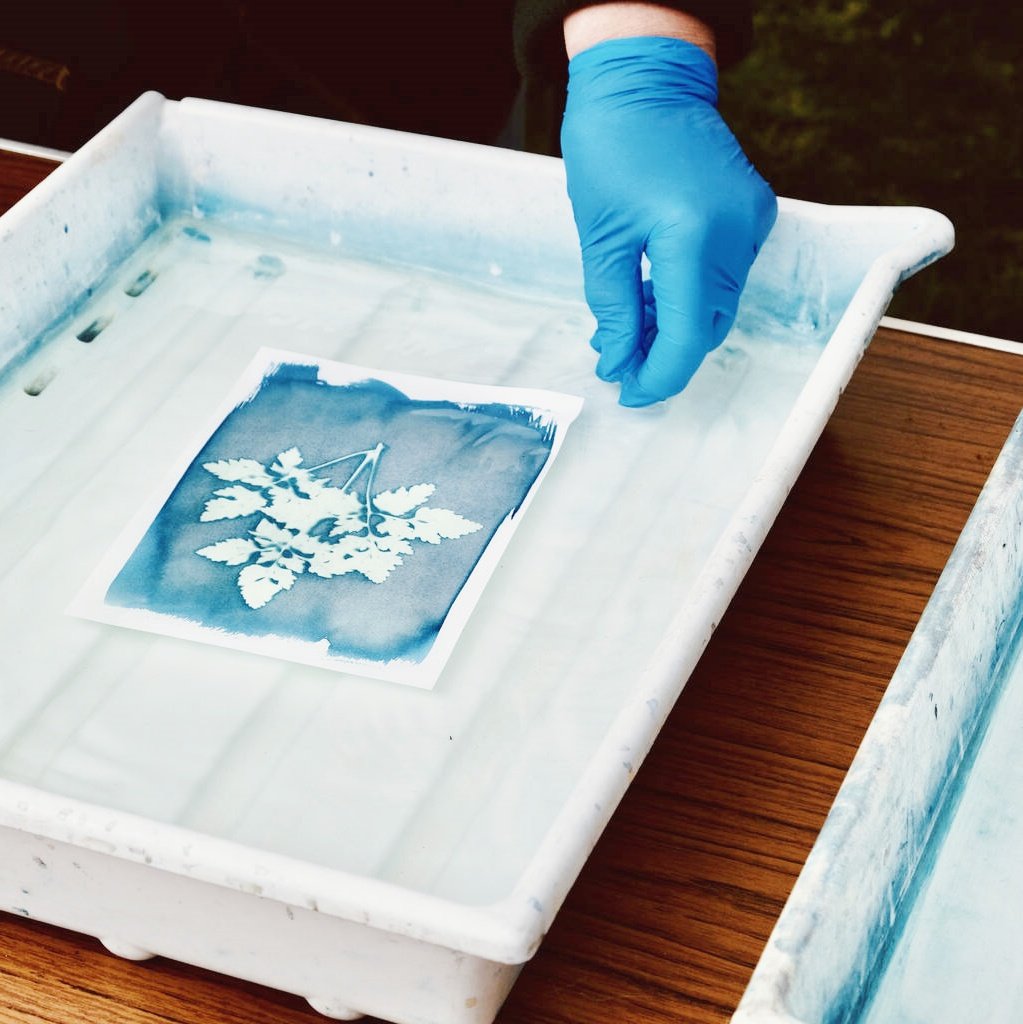Innehållsförteckning
En omfattande guide till hur du använder plastisolbläck i olika branscher
Plastisol bläck is a special type of ink used for printing on fabrics, plastic, and more. It is made from PVC-harts och mjukgörare (oily liquids). This ink is thick, durable, and works well on dark colors. Let’s explore how it’s used in different industries!
1. Vad är Plastisol-bläck?
Plastisol bläck is not water-based. It stays wet until heated. When heated to 160°C–170°C, it melts and sticks to materials.
Key Properties:
- Opacitet: Covers dark fabrics easily.
- Varaktighet: Survives washing and weather.
- Kostnadseffektiv: Cheaper than other inks for big jobs.
Why People Love It:
- Brighter colors than water-based inks.
- Easy to use for beginners.
- Works on cotton, polyester, and plastic.
2. Industries That Use Plastisol Ink
A. Textile & Apparel Industry
Plastisol bläck is used on 75% of screen-printed clothes (like t-shirts).
Fördelar:
- Stretches without cracking.
- Stays bright after 50+ tvättar.
- Perfect for dark fabrics.
ExempelVarumärken som Gildan use plastisol for 90% of their graphic tees.
Challenge: Not breathable. For eco-friendly options, try Oeko-Tex certified inks.

B. Automotive & Manufacturing
Plastisol bläck prints labels on car dashboards and wires.
Fördelar:
- Heat-resistant: Reduces fading by 40%.
- Sticks to plastic and synthetic materials.
Fallstudie: Union Ink makes fire-safe ink for car interiors (meets FMVSS 302 standards).
C. Promotional Products & Signage
Plastisol bläck prints on mugs, bags, and outdoor signs.
Fördelar:
- Väderbeständig: Used on 60% of PVC banners.
- Fast to print with heat transfers.
Exempel: Siser’s heat-transfer ink speeds production by 30%.
D. Industrial Coatings & Safety Gear
Plastisol bläck adds grip to floors and prints on safety vests.
Fördelar:
- Anti-slip: Cuts workplace accidents by 25%.
- Möter OSHA safety rules.
Exempel: Magnolia Plastics coats floors in 10,000+ factories.
E. Emerging Uses
- 3D-utskrift car parts (saves 50% on prototyping).
- Medical gowns with 99.9% germ protection (tested by Johns Hopkins).
3. How to Use Plastisol Ink: Step-by-Step Guide
A. Pre-Print Preparation
- Choose Your Material: Works best on polyester or cotton blends.
- Set Up the ScreenAnvänd en 110–160 mesh screen.
B. Printing Techniques
- Skiktning: Add ink multiple times for a raised feel.
- Underbase: Print white first on dark fabrics.
- Specialeffekter: Mix in puff eller metallisk additives.
C. Curing Best Practices
- Temperature: Heat to 160°C–170°C för 60–90 sekunder.
- ToolsAnvänd en transportörstork (som HERR) or heat press.
- TestAnvänd en thermometer to avoid under-curing.
D. Post-Print Quality Checks
- Stretch Test: Pull the fabric to check for cracks.
- Wash Test: Soap and scrub to test colorfastness.

4. Fixing Common Problems
| Problem | Lösning |
|---|---|
| Ink cracks | Adjust curing time; pre-treat fabric. |
| Färgerna ser bleka ut | Use more ink or a lower mesh screen. |
| Bläck blöder | Thin the ink; press softer. |
5. Eco-Friendly & Safe Options
Phthalate-free plastisol (som Wilflex Epic™) is 200% more popular sedan 2020.
Safety Tips:
- Följa OSHA rules for handling.
- Recycle 30% of waste with solvent-free cleanup.
6. Future Trends
- Plant-based inks (som Dow’s EcoFast™).
- Hybridbläck (mix plastisol + water-based).
- Robots for faster printing (Kornit Digital).
7. Conclusion
Plastisol bläck is versatile, durable, and great for big projects. Work with trusted suppliers like Rutland eller Internationella beläggningar for the best results!
FAQ
Är plastisolbläck vattentätt?
Yes, if cured fully.
Can I use it on nylon?
Yes, but pre-treat the fabric first.
Hur länge varar det?
6–12 months if stored in a cool place.



